“Sheet metal fabrication in aerospace deals with the design, manufacturing, and assembly of metal parts and components used in aircraft and spacecraft. It creates structurally sound lightweight and durable aerospace products.”
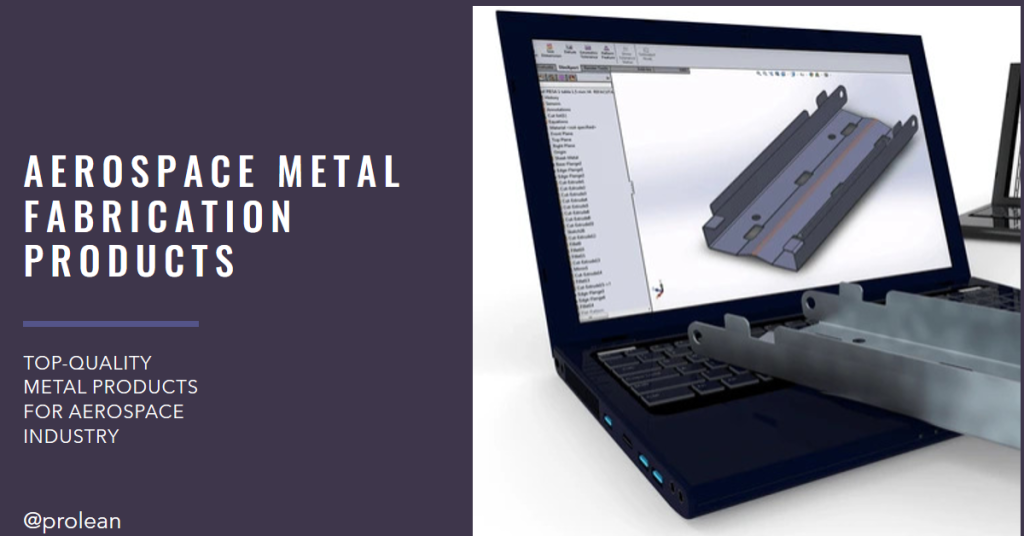
Aerospace metal fabrication is crucial in aircraft and spacecraft manufacturing. It involves cutting, bending, and assembling metal sheets. These processes create various aerospace metal fabrication products. Sheet metal fabrication is used extensively for its strength and lightness, crucial for performance and fuel efficiency.
Furthermore, the versatility of metal fabrication allows for diverse applications, from tiny brackets to large fuselage panels. In this article, we will examine six aerospace products from sheet metal fabrication.
Why Sheet Metal Fabrication for Aerospace Products?
Aerospace demands lightweight and durable parts, qualities inherent in sheet metals like aluminum and titanium. These metals can endure extreme environmental conditions while maintaining structural integrity. Additionally, the flexibility of sheet metal allows for a range of complex shapes and sizes. This adaptability is crucial for various aerospace components. The precise nature of sheet metal fabrication ensures components fit perfectly, a necessity for aerospace standards, such as ISO 9100 D and ISO 9001:2015.
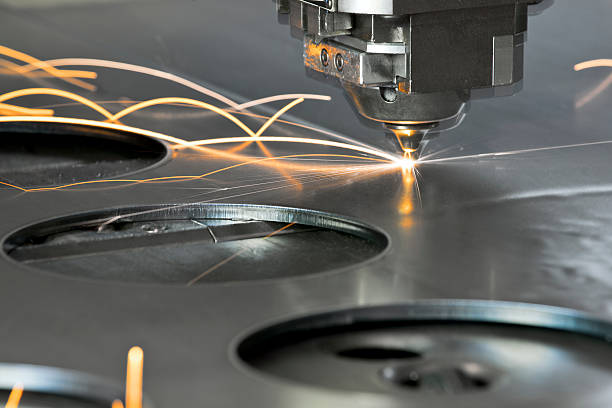
Aerospace sheet metal work
Furthermore, sheet metal fabrication techniques continue to evolve, enhancing their suitability for aerospace applications. Modern fabrication methods incorporate advanced technologies like CNC machining and laser cutting. These innovations enable the creation of components with exceptional accuracy and minimal waste. Moreover, the ability to create complex components quickly aligns well with the fast-paced development cycles in aerospace. Consequently, sheet metal fabrication remains at the forefront of aerospace manufacturing, driven by continual technological advancements.
Lastly, the importance of sheet metal fabrication in aerospace extends to maintenance and sustainability. Sheet metal components are often easier to inspect, repair, and replace. This ease of maintenance ensures longer lifespans for aerospace products, reducing overall sheet metal fabrication costs. Additionally, many sheet metals are recyclable, aligning with the growing emphasis on sustainability in the aerospace industry.
Related: CNC Machining in Aerospace Parts Manufacturing
Try Prolean Now!
1. Cooling Systems for Engine
Engine components are some of the most critical aerospace products from metal fabrication. Sheet metal fabrication crafts some engine components, such as turbine blades, exhaust parts, and cooling systems. However, the cooling system is the common one. Cooling systems in aerospace manage the extreme temperatures generated during flight. These systems comprise various pipes, heat exchangers, and other components.
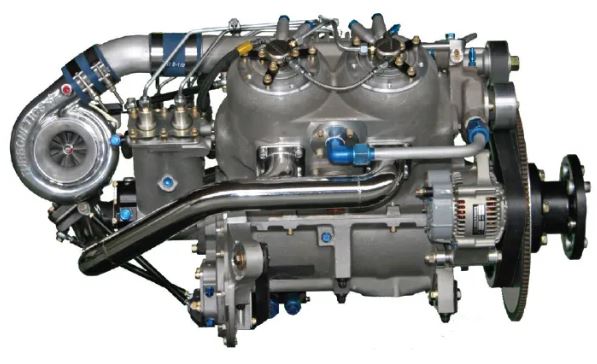
Reciprocating engine cooling system
Several metal sheets are chosen for their unique aerospace cooling system fabrication properties. Here, heat transfer capabilities and metal weight are crucial for cooling systems.
- Aluminum and its alloys
- Stainless steel
- Titanium
- Copper Alloys
The fabrication of these metal sheets into aerospace cooling systems involves precise processes. The key techniques include cutting (laser, waterjet, plasma), bending and forming for shaping, sheet metal welding (like TIG welding) for assembly, finishing treatments for durability, and rigorous inspection and testing to ensure adherence to aerospace standards.
2. Aircraft Panels and Skins
Aircraft panels and skins form the outer surfaces of aircraft, including essential parts like wings, fuselages, and tail assemblies. Their role ranges from ensuring structural integrity to optimizing aerodynamics.
Materials Used
- Aluminum accounts for about 80% of modern aircraft’s unladen weight.
- Titanium in high-stress areas.
- Carbon fiber-reinforced polymers
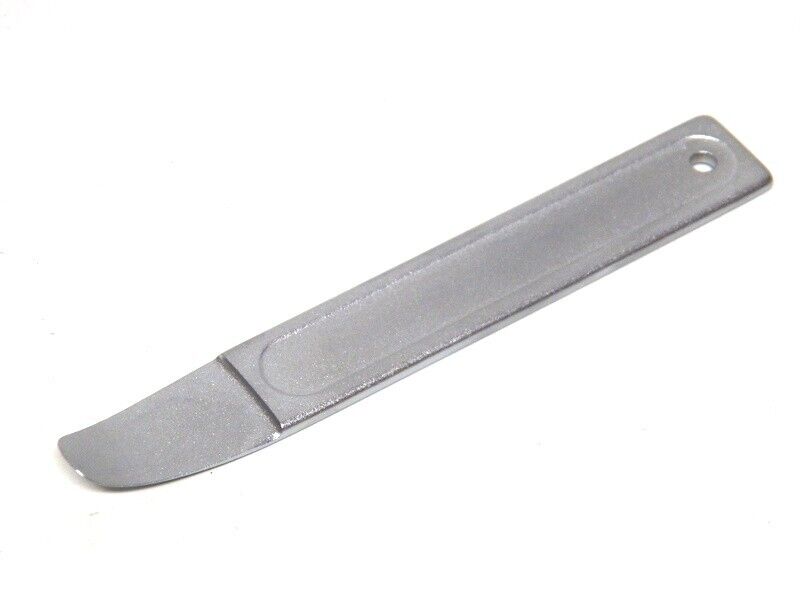
Aerospace Skin part from sheet metal
Fabrication of aircraft panels and skins involves a series of precision techniques. Precision cutting methods, like laser cutting and waterjet cutting, cut these panels into exact sizes and contours. Forming and bending processes give these sheets the aerodynamic profiles crucial for efficient flight. Advanced welding and joining techniques are essential in assembling these panels, and maintaining their strength under intense loads.
The seamless fabrication of these panels plays a vital role in reducing drag, thus enhancing fuel efficiency and performance. Their strategic design and placement need to be carefully calculated to optimize airflow, ensuring the aircraft operates at peak aerodynamic efficiency.
3. Control Surfaces
Control surfaces comprise components like flaps, rudders, and ailerons. These are fundamental in managing the movement of aircraft. Next, control surface parts are intricately fabricated from sheet metal to match the strength and flexibility required for precise control during flight.
Materials Used
- Aluminum alloys for balance of lightweight and strength. They are ideal for responsive control surfaces.
- Titanium in areas subjected to higher stress
- Composite Materials like carbon fiber-reinforced polymers for their superior strength-to-weight ratio and flexibility.
For fabrication, techniques like laser cutting, waterjet cutting, sheet metal bending and forming, and joining are used. Bending provides the control surfaces with their specific aerodynamic shapes. While welding is used in joining.

Ailerons and flaps
The precise manufacturing and strategic placement are critical for effective airflow management, contributing to the aircraft’s overall aerodynamic performance. The careful selection of materials and fabrication methods enhances the functionality and reliability of these control surfaces.
Try Prolean Now!
4. Internal Framework and Supports
The internal framework and supports of an aircraft are fundamental to its structural integrity and overall functionality. These components maintain the shape and strength of the airframe under various flight conditions. The internal framework and supports also play a significant role in distributing the loads and stresses experienced during flight, contributing to the aircraft’s overall stability and safety.
Table: Materials and Properties
| Aluminum Alloys | Predominantly used for their optimal balance between lightweight and structural strength, suitable for the internal framework. |
| Stainless Steel | Selected for areas that require extra durability and corrosion resistance, ensuring the long-term integrity of the supports. |
| Titanium Alloys | Utilized in high-stress areas of the internal framework due to their superior strength-to-weight ratio and resistance to fatigue. |
Different fabrication techniques are employed for internal frameworks and supports. First, Laser cutting and waterjet cutting are used to achieve precise dimensions and shapes.
Second, forming and bending achieve the shape of metal sheets into the complex contours required for internal supports and framework. Third, riveting for joining metal components in aircraft structures. Lastly, Specialized Aerospace CNC machining for creating components with intricate designs and tight tolerances
5. Engine Casing
Engine casings stand as a paramount example of precision metal fabrication. These casings serve as the protective shells for aircraft engines, ensuring operational integrity under extreme conditions.
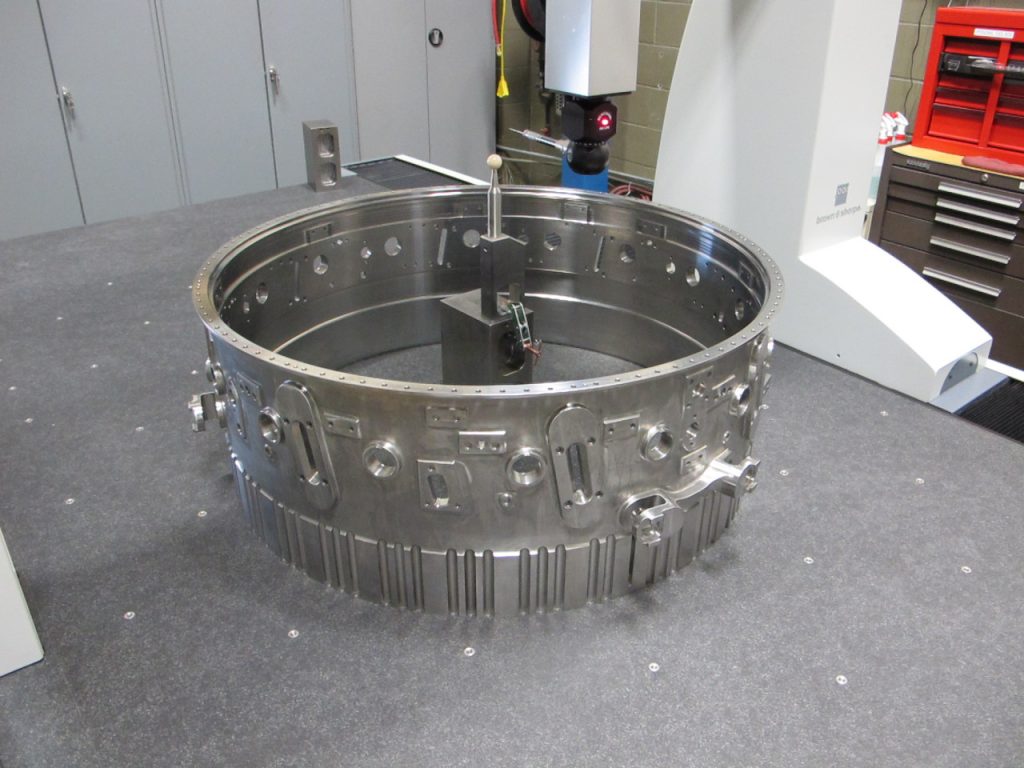
Aircraft engine casing
Different metals and alloys are chosen for engine casing d to balance lightness and strength.
- Titanium Alloys: Utilized in areas demanding high strength and heat resistance, especially in military and high-performance aircraft.
- Nickel Alloys: Selected for sections exposed to extreme- heat, due to their excellent high-temperature resilience.
Next, a single metal fabrication technique can not create this complex aerospace product. It involves a combination of other methods with fabrication techniques. In fact, fabrication is more crucial in the assembly of enclosures.
- Precision Machining with turn–milling: CNC turn-milling provides the accuracy required for the engine casing’s complex geometries.
- Advanced Casting: Casting produces detailed and robust components for engine casing.
- Welding and Joining: Techniques like TIG welding ensure strong bonds that withstand mechanical stresses during flight.
Engine casing plays a vital role in the thermal management of aircraft and spacecraft engines. They ensure heat generated by the engine is dispersed effectively. Casings also enhance the engine’s aerodynamic profile, enhancing overall aircraft performance.
6. Brackets and Mounts
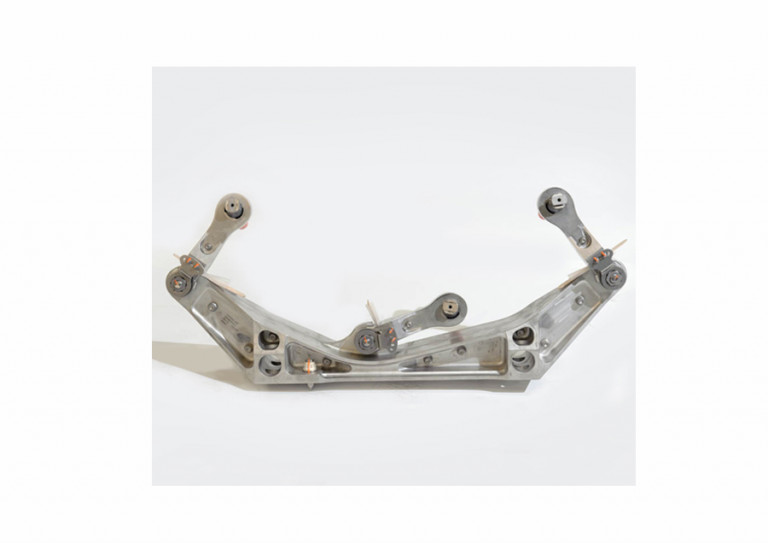
Aircraft brackets
Brackets and mounts are used to secure various systems and assemblies within an aircraft, ensuring structural stability and operational integrity. As small but essential components, they exemplify how every aspect of metal fabrication is integral to the functionality and safety of modern aircraft.
Table: Materials and Properties
| Aluminum Alloys | Widely used for their lightweight and durable characteristics, ideal for internal structural components. |
| Stainless Steel and alloys | Chosen for their strength and resistance to corrosion, are crucial for brackets and mounts exposed to diverse environmental conditions. |
| Titanium Alloys | are Employed for their high strength-to-weight ratio, especially in areas subject to intense stress. |
So, Brackets and mounts are essential for keeping various aircraft components in place, from electrical systems to structural elements, and aid in the distribution of load and stress, contributing to the overall structural integrity of the aircraft.
Fabrication Techniques
- Laser Cutting and Waterjet Cutting: These methods allow for precise shapes and sizes, essential for components that need to fit perfectly.
- CNC Machining: Provides the accuracy and flexibility needed for producing complex bracket and mount designs.
- Welding and Joining: Advanced techniques ensure that these components are securely assembled, and capable of withstanding the vibrations and stresses of flight.
What Are the Advantages of Sheet Metal Fabrication in Aerospace?
Sheet metal fabrication transforms various metals into functional aerospace components, crucial for constructing and maintaining aircraft. The advantages of sheet metal fabrication in aerospace are numerous, each contributing significantly safer, more efficient, and technologically advanced aircraft.
Enhanced Durability and Strength
One of the foremost advantages of sheet metal fabrication in aerospace is the enhanced durability and strength it brings to aircraft components. The process involves using high-grade materials like titanium, stainless steel, and aluminum. However, China’s aluminum sheet metal fabrication is the most common one. This choice of materials ensures that the components can withstand the rigorous conditions of flight, including extreme pressures, temperatures, and mechanical stresses.
Durability and strength are not just about enduring physical stresses; they also play a pivotal role in extending the lifespan of aircraft. It also minimizes the need for frequent replacements and repairs, crucial for cost-effectiveness and operational efficiency in the aerospace industry.
Precision and Customization
Advanced sheet metal technologies like laser cutting, waterjet cutting, stamping, and CNC allow for the creation of parts with extremely tight tolerances. This precision ensures that each component fits seamlessly into the aircraft. Furthermore, the adaptability of sheet metal fabrication techniques makes it possible to produce customized components that meet specific design requirements.
The custom aerospace sheet metal components enable the creation of unique aircraft designs and facilitate the integration of new technologies and improvements in existing models. Customization through precision fabrication allows optimization of each part for its specific function, enhancing the overall efficiency and performance. This aspect of sheet metal fabrication is particularly beneficial in prototyping and developing new aerospace technologies.
Weight Reduction for Improved Efficiency
The ability to transform lightweight materials like aluminum and titanium alloys is essential for reducing the overall aircraft weight. This weight reduction directly translates to improved fuel efficiency. Source. Moreover, the strength of these materials means that this weight reduction does not compromise the structural integrity or safety of the aircraft.
Lighter aircraft require less fuel, which not only reduces operating costs but also decreases the environmental footprint of aviation. This aspect of sheet metal fabrication aligns well with the growing emphasis on sustainability in the aerospace industry.
Fabricate Your Precise Aerospace Products at Prolean
At Prolean, we offer top-tier sheet metal fabrication services tailored specifically for the aerospace industry. Our expertise lies in transforming raw materials into precision-engineered aerospace components, ranging from prototypes to mass-produced parts. We prioritize accuracy, quality, and adherence to the strictest aerospace industry standards in every project.
We employ advanced technology and machinery, including advanced CNC controls, laser cutting, bending, stamping, welding, and more. Furthermore, our team of skilled engineers and technicians have years of experience in aerospace manufacturing. This expertise allows us to handle complex designs and challenging projects, delivering products that perfectly align with our client’s needs and expectations.
Key Highlights of Prolean’s Aerospace Sheet Metal Fabrication Services
- Expertise in Complex Designs: Skilled team capable of handling intricate and challenging aerospace projects.
- Rapid Prototyping: Quick turnaround on prototypes, allowing for efficient design testing and iteration.
- Mass Production Capability: Scalable solutions for large-scale production needs without compromising quality.
- Stringent Quality Control: We do comprehensive inspections and testing at each production stage to ensure the highest quality standards.
- Material Versatility: Ability to work with diverse materials, including aluminum, titanium, and stainless steel, catering to various aerospace applications.
- Customization and Flexibility: We offer tailored solutions for specific client requirements, from unique component designs to specific production volumes.
- Commitment to Client Satisfaction: Dedicated customer service for clear communication and understanding of client needs throughout the project lifecycle.
Read more:
- CNC Milling for Aerospace: Precision and Perfection
- CNC Plastic Machining in Aerospace: A Detailed Case Study.
Summing Up
Aerospace metal fabrication is a series of intricate processes, from design to production. As we have seen, aerospace sheet metal fabrication and services are not just about creating parts but also about crafting precision, safety, and innovation.
There are numerous aerospace metal fabrication products, from skin panels and engine casings to engine components. You can contact us if you need any aerospace products, from prototypes to large volumes.
FAQS
What is aerospace metal fabrication?
Aerospace metal fabrication is the process of designing, cutting, shaping, and assembling metal parts specifically for use in aircraft and spacecraft.
How do aerospace sheet metal services differ from regular metal fabrication?
Aerospace sheet metal services involve specialized techniques and adhere to stricter standards than regular metal fabrication. They require greater precision.
What are some common aerospace metal fabrication products?
Some common products include aircraft panels and skins, engine components, brackets and mounts, control surfaces, and fuselage structures.
What are the challenges faced in aerospace metal fabrication?
Key challenges include working with advanced materials that require specialized handling, designing components for extreme environmental conditions, and maintaining exacting manufacturing tolerances to ensure safety and performance.
What metals are used for fabrication in aerospace?
In aerospace fabrication, aluminum, titanium, stainless steel, nickel alloys, and composite materials are predominantly used for their strength and lightness.
Resources
- Mouritz, A. P. (2012). Introduction to Aerospace Materials. Retrieved from https://www.sciencedirect.com/book/9781855739468/introduction-to-aerospace-materials.
- Enhance Quality. (2022). Aerospace Quality Standards. Retrieved from https://www.enhancequality.com




Article Nicely connects aerospace industry and sheet metal techniques